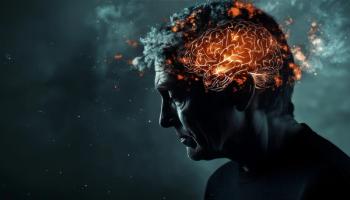
Traumatic Brain Injury’s Impact on Normal Aging and Neurodegenerative Diseases
A traumatic brain injury sustained earlier in adult life is likely to interact with normal aging processes. Learn more here.
A significant number of individuals who sustained a traumatic brain injury (TBI) during early and mid-adulthood are living with disabilities within the US. When considering the impact of TBI over the years, it becomes clear that the effects of TBI may become more evident as aging takes place. This is because a TBI sustained earlier in adult life is likely to interact with normal aging processes.
TBI Can Exacerbate Age Related Changes
As the brain ages, there is naturally occurring atrophy of cerebral tissue including structures such as the hippocampus, which plays a significant role in memory and cognitive processing. The hippocampus is frequently impacted by TBI, thus increasing the likelihood of developing memory impairments as one ages.1 Interestingly, a large hippocampal volume appears to offer protection from dementia.2 A decline in white matter volume is also observed during normal aging.3 White matter is mainly composed of myelinated axons and decreases in myelin density will hinder the capacity to transmit signals across the nervous system. Following TBI, these changes can occur at an accelerated rate compared with normal aging.4
The natural process of remyelination is also altered as the brain ages.3 Oligodendrocyte loss arising from the original injury may predispose the brain to decreased remyelination capacity.5 Oligodendrocytes are critical in maintaining the myelin sheath. White matter deterioration can manifest as cognitive deficits by affecting the efficiency of connectivity.6,7 Studies utilizing functional imaging have shown that there is a change in network connections during normal aging that is exacerbated with brain injury.8 Primary pathways that were established during development may be affected by injury and replaced with redundant pathways that, while enabling function, are not as effective as the originals and will render the brain more vulnerable to the effects of aging.9 Given that even mild TBI can have an impact on connectivity, it is not surprising that the risk of dementia is increased with repeated injury.10,11
Normal aging also has an impact on neuroendocrine and immunological systems that can contribute to age-related cognitive decline.12,13 Long lasting hormonal dysregulation is not uncommon in many patients after TBI and may well contribute to neurodegenerative processes across time.10,11 Particularly noteworthy is the impact that hormones have on emotional health and cognition.14 Hormones also are known to have immunomodulatory effects. Microglia, the brain’s primary immune cells, are known to be especially vulnerable to the effects of age.15 Age related immune changes are also likely to be exacerbated by a history of TBI. Increased microglial activity can be observed years after the initial injury.16-18 Persistent microglial activation can increase oxidative stress thus contribute to age- and injury-induced structural changes and long-term functional deficits.18,19
TBI May Precipitate or Exacerbate Neurodegenerative Diseases
The possibility of developing dementia increases with advancing age.20 When considering the interaction between TBI and neurodegenerative diseases, it is critical to distinguish between the disease per se and the pathological characteristics that are associated with these diseases.21 This distinction is particularly notable in the case of Alzheimer disease (AD). Studies are suggestive of an increased incidence in AD-like pathology following TBI.11,22,23 In general, the association between a history of TBI and the onset of AD, has shown to be elusive.24,25 Nevertheless, a TBI history may influence the onset of AD given the appropriate genetic factors. APOE-4 and TBI appear to have a synergistic effect that increases the risk of AD-like symptomatology.26 The APOE-4 allele has been identified as a genetic predictor of AD.27 Associations between a history of TBI and Parkinson disease (PD), amyotrophic lateral sclerosis, and multiple sclerosis have also been observed.28 TBI has been associated with cerebral microinfarcts, Lewy body accumulation, and parkinsonism.29 Lewy bodes are intercellular protein aggregates associated with dementia and PD. The association between PD and TBI has been widely debated due to conflicting studies.30,31 Parkinson symptomatology may be more prevalent after repeated trauma.31 Alternatively, a history of TBI may increment the likelihood of neurological illness in those patients who are at risk of PD.
Prognosis and Treatment Strategies
To achieve successful aging, it is important to have a lifestyle that integrates factors known to promote health and consider strategies that address changes in neuroendocrine and immune systems. These same approaches are especially important to those that have survived a TBI.Vigilance for the development of comorbidities is necessary along with proper awareness of physiological, environmental and genetic factors that may increase risk to cognitive decline.
Dr Griesbach is the national director of clinical research for the Centre of Neuro Skills. She currently holds an appointment at the Neurosurgery Department, Geffen School of Medicine, UCLA, and is past president and chair for the National Neurotrauma Society.
References
1. Bigler ED, Blatter DD, Anderson CV, et al.
2. Chetelat G, Villemagne VL, Pike KE, et al.
3. Franklin RJ, Zhao C, Sim FJ.
4. Maxwell WL, MacKinnon MA, Stewart JE, Graham DI.
5. Levin HS, Williams DH, Valastro M, et al.
6. Maas AI, Menon DK.
7. Ziegler DA, Piguet O, Salat DH, et al.
8. Filippi M, van den Heuvel MP, Fornito A, et al.
9. Blumberg M, Hardy J, Robinson S. Handbook of Developmental Neuroscience. Oxford; 2009.
10. Kreber LA, Griesnbach GS, Ashley JA.
11. Griesbach GS, Masel BE, Helvie RE, Ashley MJ.
12. Veldhuis JD, Sharma A, Roelfsema F.
13. McEwen B, Milner TA.
14. Ashman TA, Gordon WA, Cantor JB, Hibbard MR.
15. Damani MR, Zhao L, Fontainhas AM, et al.
16. Rowe RK, Griesbach GS.
17. Smith C, Gentleman SM, Leclercq PD, et al.
18. Ramlackhansingh AF, Brooks DJ, Greenwood RJ, et al.
19. Brown GC, Neher JJ.
20. Katzman R.
21. Ashman TA, Cantor JB, Gordon WA, et al.
22. Johnson VE, Stewart W, Smith DH.
23. Masel BE.
24. Fleminger S, Oliver DL, Lovestone S, et al.
25. Dams-O'Connor K, Spielman L, Singh A, et al.
26. Graham DI, Horsburgh K, Nicoll JA, Teasdale GM.
27. Guo Z, Cupples LA, Kurz A, et al.
28. Perry DC, Sturm VE, Peterson MJ, et al.
29. Crane PK, Gibbons LE, Dams-O’Connor K, et al.
30. Goldman SM, Tanner CM, Oakes D, et al.
31. Krauss JK.
Newsletter
Receive trusted psychiatric news, expert analysis, and clinical insights — subscribe today to support your practice and your patients.














